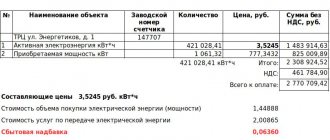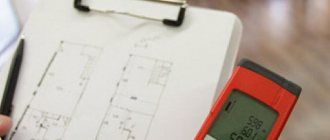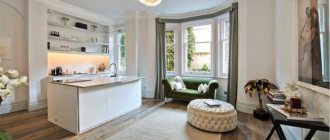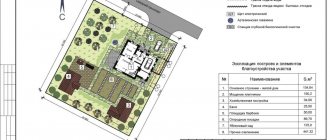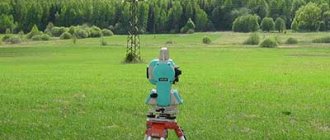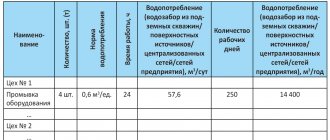Not all people are well versed in square meters, and even more so, not everyone knows the differences between common and residential apartment space. For example, what area does a kitchen and bathroom belong to, or what to do in a two-level apartment with terraces, balconies and stairs.
In everyday life, these legal details do not seem particularly useful, but payment for utilities, the market value of the home, etc., depend on the numbers appearing in housing documents.
Dear readers!
Our articles talk about typical ways to resolve legal issues, but each case is unique. If you want to find out how to solve your particular problem, please use the online consultant form on the right or call. It's fast and free!
What is the total apartment area and what is included in it?
The total area is the number of meters of all premises located in the apartment, regardless of whether they are auxiliary or residential, used to calculate utility bills, in agreements for the purchase and sale of housing, in advertisements for sales.
The total footage of the apartment includes:
- living rooms;
- children's rooms, guest rooms and bedrooms;
- kitchens;
- corridors;
- built-in cabinets;
- niches in the walls, the so-called “Khrushchev refrigerators.”
What is the right of lifelong inheritable ownership of a plot? The features of this type of ownership are described here.
The total area does not include:
- balconies and loggias;
- terraces and verandas;
- niches that are less than 1.80 meters high;
- the area under the stairs if its height is less than 1.60 meters (measured perpendicular to the floor);
- fireplace stoves;
- arches and doorways less than 2 meters wide;
- rooms without heating.
The size of the total apartment area is used for municipal statistical supervision, and the apartment area data is used for official statistical accounting of the housing resource in the Russian Federation, establishing social housing standards, calculating utility bills, etc.
The wording of the area and other characteristics of the apartment is regulated by the “Instructions on the accounting of housing stock in the Russian Federation.”
How is a deed of gift for a house drawn up? All the pros and cons of this document are at the link.
Total living area.
Differences between residential and total footage of an apartment
- Number of meters. The living area is only a component of the total, so its footage is much smaller (sometimes half);
- Included premises. Living space includes premises intended for rest and sleep (children's rooms, guest rooms and bedrooms). The total area covers all the rooms in the apartment;
- Usage . The circumstances of residence depend on the living space (the possibility of receiving subsidies, adoption of a child, etc.), and the general market value of housing, payment for utility bills, payments for major repairs in the house.
What are the features of selling a room in a communal apartment? Full information in this article.
Controversial issues
It is advisable to familiarize yourself with them first. How is the total area of an apartment determined? Should balconies and loggias be taken into account in the calculation? How are different situations regulated? There are two main legislative acts that regulate the determination of housing area. This:
- housing code 2005;
- SNiP 2003 “Residential multi-apartment buildings”.
It should also be taken into account that some of the provisions described in these documents were declared repealed in 2009 by Federal Law 384-FZ. Let's go through the main important points of the housing code:
- Art. 15, paragraph 5 - the basis for calculations of residential premises. The total area of the apartment consists of the sum of all areas. This includes rooms and utility rooms that are designed to meet the needs and requirements of the apartment owners. Terraces, balconies, loggias and verandas are not included in the total area.
- Art. 16, paragraph 1 – definition of types of residential premises: residential buildings or parts thereof, apartments, rooms.
- Art. 16, paragraph 3 – formulates the concept of an apartment as a structural room that is separate in nature and located in an apartment building, with direct access to common areas. The components of an apartment are one or more rooms, auxiliary premises designed to satisfy household needs.
According to the above SNiP, the determination of the total area of the apartment put into operation is based on the external dimensions. Here we are already talking about including a balcony and loggia.
When calculating area, it is recommended to use the following coefficients:
- 0.5 for the loggia;
- 0.3 for balconies and terraces;
- 1 for cold storerooms and verandas.
It should be borne in mind that SNiPs are not the main document. The Housing Code in this case is more important, and you should focus exclusively on it.
Many officials today insist on adding extra square meters to the living area. Therefore, property owners are interested in whether the loggia is included in the total area of the apartment. If the calculations are based on the 2003 standards, then such a possibility is provided there. However, one should still be guided by a more important document, such as the Housing Code of the Russian Federation. According to this regulatory act, the balcony is excluded from the total area of the residential premises.
According to the Housing Code and SNiP, partitions are considered part of the main and auxiliary premises, therefore their size is part of the total area of the apartment in sq. m.
In our country, current laws and regulations change quite often, so there can be a lot of questions related to determining the area of living space. Most of the features of calculations are regulated by various documents and regulations, which may contradict each other. This can cause certain difficulties for ordinary people.
How is the area of an apartment calculated: step-by-step instructions
Prepare:
- Technical passport of the premises;
- Roulette;
- Sheets of paper;
- Calculator;
- Pen or pencil.
The technical passport for the apartment contains all the information on the area; in order to find out the size of your home, you just need to look into it.
In order to learn how to take measurements on your own, take a tape measure, a computer and ask someone to help you.
- First of all, draw a diagram of the apartment on a piece of paper in order to enter the values. Don’t forget to measure utility rooms (closets, corridors, etc.);
- Measure the length of absolutely all the walls in the room at the level of the baseboard (pull the tape measure well and accurately), convert the amounts into meters and record them on the diagram. If the room has an irregular appearance (protrusions, corners, curves, recesses), it is necessary to divide the room into separate shapes and indicate their sizes in the diagram;
- Multiply the width and length of each room and fix the scale in the plan. By adding up all the areas of the rooms, you get the total. Do not forget that each living space has 3 parameters: total, living and area of the apartment itself.
When calculating the total footage, reduction factors are applied (for terraces and balconies - 0.3; for loggias - 0.5; for verandas and cool storage rooms - 1.0).
What documents need to be changed when changing registration? See the link for the list of documents.
A clear example of calculating the total area
It is possible to calculate footage using several formulas:
(a +b +c +d) *h=S
S – total area;
a+ b+ c+ d – sides of the room;
a, c – 6.55 meters;
b, d – 4.55 meters;
(6.55+4.5+6.55+4.5) *3 = 66.3 sq. m.
The area of doors and windows should be calculated from the total area of the room.
Using such measurements in all rooms, you can determine how the area of the entire room is calculated.
Information about the total area is indicated in the technical passport.
Calculation rules
How to calculate the total area of an apartment is given below. This calculation is not difficult - you need to measure the area of all the rooms included in it and summarize the results. But there are some nuances that should be taken into account:
- To calculate the square footage of a rectangular room, you need to measure the lengths of its 2 walls, which are connected to each other. After this, the resulting numbers must be multiplied.
- A complex-shaped room can be mentally divided into rectangles, their areas can be calculated by analogy with the first option, and added. The result obtained will be equal to the area of the room.
- If the room has diagonal walls, then you should proceed in the same way: divide it into imaginary rectangles. That part, one of the sides of which is a wall at an angle to the other walls, will be a right triangle. Its area is equal to half the product of its legs (walls forming a right angle). Add all the obtained values together.
Recommendation: It is better to draw rectangular figures that are taken into account on paper using a ruler. This action will help reduce the likelihood of errors.
Room measurements must be taken from inside the room using a tape measure, applying it to the junction of the wall and the floor. It is better to perform these steps together for convenience.
About balconies and loggias
What are the differences between a loggia and a balcony? The loggia has a ceiling and side walls, it is, as it were, “recessed” into the building, and the balcony “looks out” beyond the boundaries of the house, so their calculation is carried out differently.
At first glance, these differences are unclear and unnecessary, but they should not be ignored; they have legal consequences.
What documents are needed for a tax refund when buying an apartment? You will find a description of this procedure in this publication.
There are several other significant points that affect the balcony. You have the right to dispose only of the inside of the balcony; the outside is the common property of all residents of the building. Here you can find both pros and cons.
For example, by uniting, residents of a building have the opportunity to transfer the outer part of all balconies for use under advertising banners and earn decent money from this.
The law works similarly, if one of the residents decided to plant a climbing bush so that it could “crawl” along the wall of the house, in this case he will need written permission from the other owners of the balconies.
Apartment plan. The balcony is not included in the total area.
What does the size of the apartment affect?
Several factors depend on the size of the total apartment area:
- Cost of living space upon purchase. A person who does not know the intricacies of calculating footage may, when viewing advertisements, imagine a spacious living room and bedroom, but in reality this will not be the case. When choosing an apartment, you should pay attention to the living area of the apartment in advertisements. The same applies to people entering into a shared participation agreement; it is necessary to carefully study the documentation so that it does not turn out that you are overpaying for the common area, getting a large kitchen and a spacious bathroom, but the living rooms are very small.
- Payment for heating. Central heating is installed not only in residential premises, but also in common rooms . Accordingly, the payment amount is calculated based on the total apartment area. If you suddenly get the idea of switching to electric heating or gas (independent heating), to make this idea profitable, you need to take the total apartment area for calculation.
- Payment for major repairs of the building. The larger the square footage of the apartment the owner has, the more he has to pay contributions for the capital restoration of the house. The size of the apartment is calculated based on the total area, it turns out that if you have a tiny bedroom, a spacious kitchen, and a bathroom, you will pay significantly more than your neighbor who has a huge bedroom and living room.
- Comfort and space. The larger the living area, the more spacious the bedrooms, children's rooms and guest rooms. It is possible to install a large bed, arrange spacious wardrobes, hang various shelves and other attributes for a comfortable stay.
But the footage of the total area is no less significant: a spacious bathroom and kitchen, where residents spend a lot of time, as well as corridors in which storage cabinets, pantries and other utility rooms are usually located.
Is it possible to spend maternity capital on apartment renovation? See the link for the answer.
Thus, when measuring the total footage, it is necessary to take into account absolutely all rooms in the apartment: living rooms, bathrooms, toilets, passages, corridors, kitchens, vestibules, etc.
About the balcony, loggia and total area of the apartment, see here:
Main components
The calculation of the total area of the apartment is carried out according to several indicators. Three characteristics can be distinguished:
- living space;
- general;
- apartment area.
Without taking into account these indicators, it is impossible to say exactly what residential real estate is. Therefore, when purchasing, be sure to clarify this information. If you know what is included in each type of room area, then you will not be afraid of deception when concluding real estate transactions.
Free legal consultation: ON HOUSING ISSUES
Example: I took out loans from a microfinance organization to renovate an apartment and treat an illness.
I realized late that these were unaffordable loans for me. What should I do? Moscow St. Petersburg By clicking the SEND button, you accept the terms and conditions Send Send
Moscow Government
Ministry of Justice of the Russian Federation
Rospotrebnadzor Latest questions Full comprehensive service From the moment you contact us until the issue is completely resolved, we are ready to accompany our clients, providing them with the necessary services and advice.
They call and threaten with various methods of influence.
Free detailed analysis of the situation Our specialists will study your situation in detail, review all available documents, and draw up a clear picture of the problem.
Working for results We are interested in the success of your business!
Your victories are our victories. We are exclusively results-oriented.
Drawing up documents If necessary, the lawyers of our company will take upon themselves the preparation of all the necessary documents for a positive resolution of the case. Free study of options Only after a detailed analysis of the available documents and immersion in the current situation will we be able to work out solutions and the feasibility of their use.
Submitting documents We take care of everything. Compilation. Collection of the necessary package of documents.
